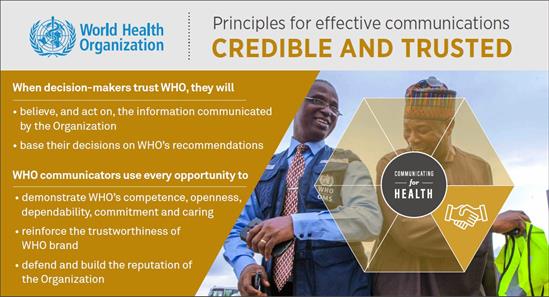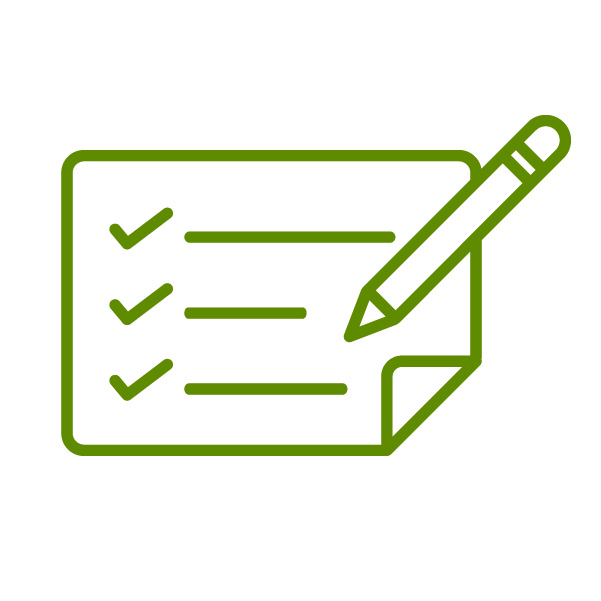.tmb-768v.jpg?Culture=en&sfvrsn=135babef_2)
Principle: Credible and trusted
Speak as "One WHO"
Tactics to apply to make your communications credible and trusted
Speak as "One WHO"
Consistent messaging, coordination among divisions, and good internal communications are part of effective communication practice. As such they are a critical focus for WHO. Promoting the same WHO message from all channels builds credibility and trust.
WHO communicators are encouraged to regularly share technical content, key messages, narratives and media responses across all three levels of the Organization. As news breaks or activities are planned, well-informed communicators are better able to ensure consistency, avoid conflict, and coordinate between levels and departments.
Share core messages across all programmes and levels
Sharing core messages across the Organization enhances the perception of “One WHO”, promotes consistency, and strengthens WHO’s reputation. Communicators routinely disseminate key messages on emergency topics and World Health Day observances between levels and departments. This practice is encouraged for all high-priority issues.
Meet with technical departments regularly
To promote accuracy of WHO messages and materials, communicators must work closely with technical experts to ensure the accuracy of messages and materials. The Department of Communications at the Office of the Director-General (DCO) uses a portfolio model to ensure collaboration, assigning specific focal points as liaisons with health clusters and technical units. These focal points become familiar with their specific public health topic.
To support the technical units’ communication initiatives, they:
- participate in regular meetings with the respective technical teams;
- integrate communications considerations from the beginning of discussions on research, policies, interventions and initiatives; and
- serve as the point of coordination within DCO to access communication services – such as web, media relations, training, and audio visual support – that can support the technical unit’s goals and needs.
Communicate with regional teams regularly
Communicators at headquarters and regional offices conduct regular calls to address high priority issues, including emergency communication coordination.
Convene WHO communicators regularly to address the Organization-wide priorities and strategic communication approaches
Every 12 to 18 months, communicators from headquarters, DCO, and regional and country offices gather for the Global Communications Forum and communication training. This meeting provides a critical, regular opportunity to take a longer view at communications capacity building, priority needs and strategy across the Organization.
Coordinate during emergencies
Coordination and collaborative implementation of communications strategies are especially important during public health emergencies. The DCO Emergency Communications Operations Plan outlines steps for cross-organization goal setting, tactics, and assessments for communication to address high visibility, rapidly evolving emergency events.
Maintain a global editorial calendar
The WHO global editorial calendar is available on the WHO intranet for communicators at all levels of the Organization.
Entries include activities at headquarters, regional and country offices. Products and events associated with the calendar schedule are also included. The global editorial calendar:
- increases awareness of upcoming events and communications activities;
- offers opportunities to leverage channels and broaden outreach for scheduled events; and
- shows current schedule of events to avoid scheduling conflicts.







